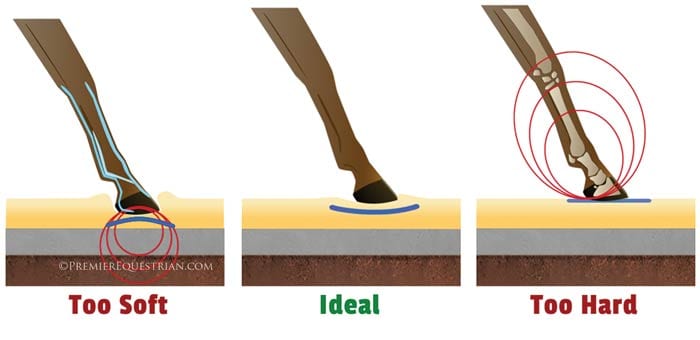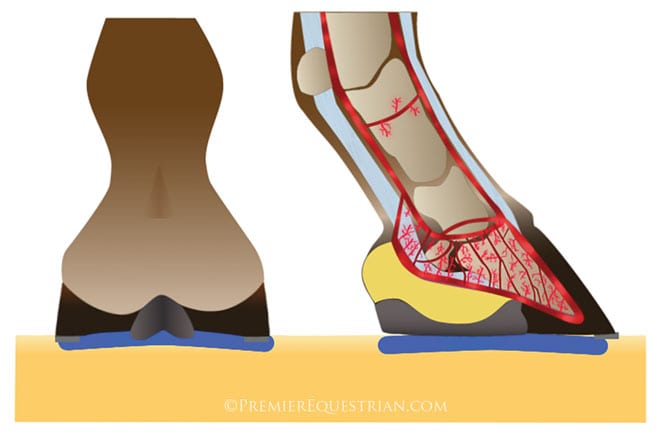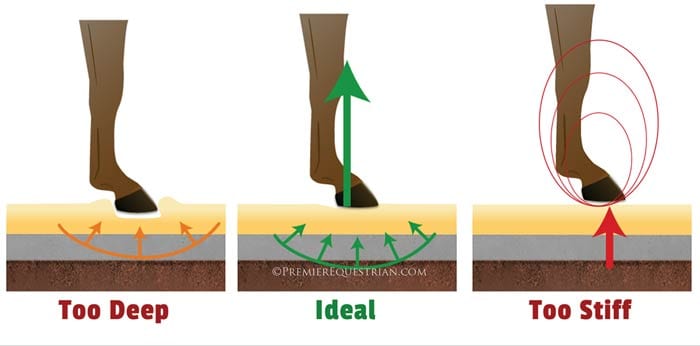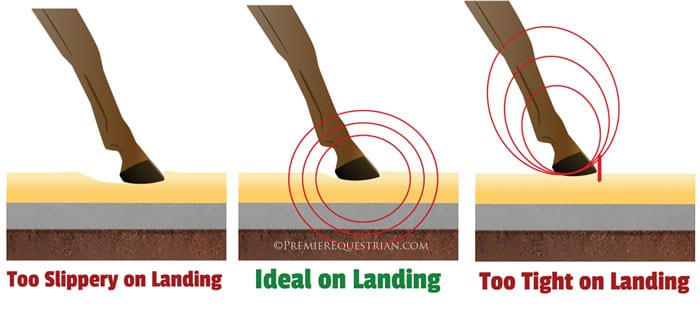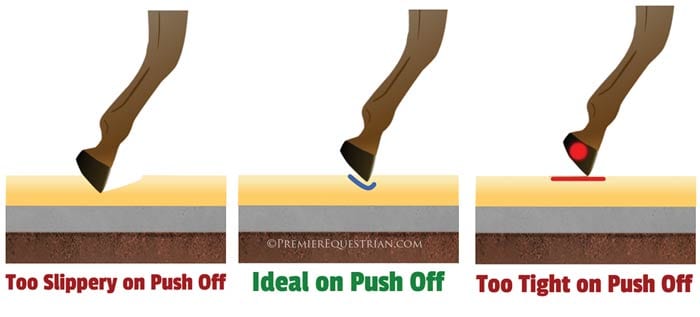Horse Biomechanics
Don’t let hard and soft surfaces affect the health of your horse.
Watch our video to see the effects different surfaces have on horse biomechanics. We’ll explain what an ideal surface should consist of.
The Horse’s Footfall Phases
Breaking down the 3 phases of the footfall will help you to understand the interaction between the horse and the arena footing surface.
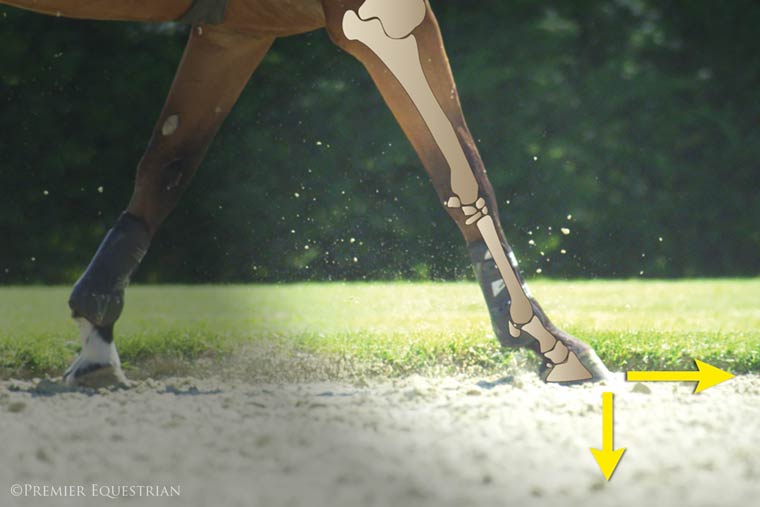
1. Landing Phase
During the landing phase, the hoof touches the ground and comes to a stop. As the hoof stops, sliding forward and downward into the surface, bones in the leg collide. Concussion can cause shock waves and vibrations to be distributed throughout the ground and leg.
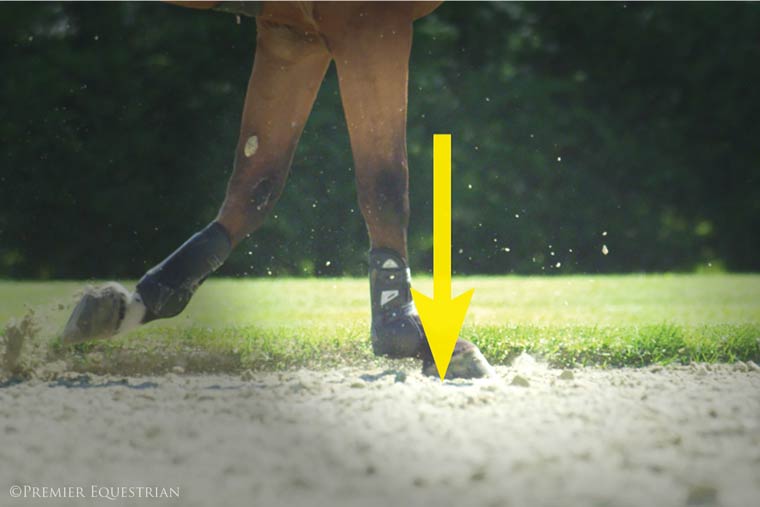
2. The Loading Phase
During the loading phase, the whole hoof is in contact with the ground, carrying the full weight of the horse and rider. The fetlock, flexor tendons, and suspensory create a shock absorbing effect. Pressure under the frog stimulates blood circulation through the hoof. The loaded weight increases depending on movements, such as collection, landing from a jump, and galloping.
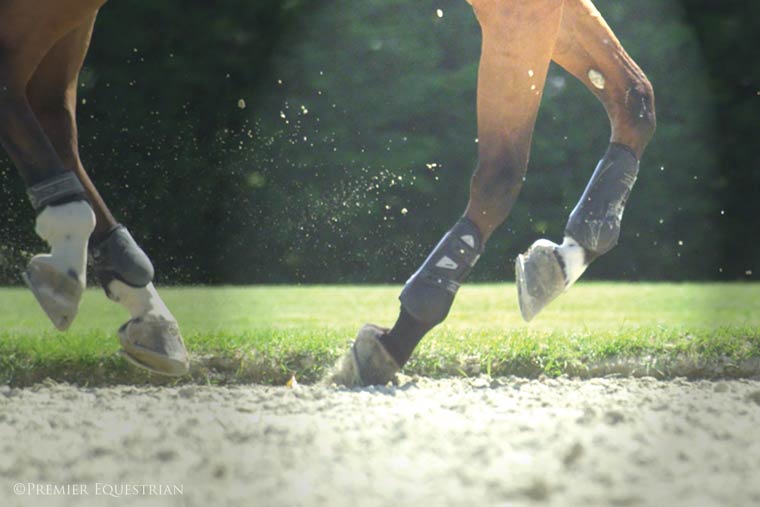
3. Rollover/Push-Off Phase
During the rollover-push off phase, the heel rotates off the ground, rolling over the toe for push off into the next stride.
Surface Characteristics
An ideal arena surface allows horses to move efficiently through the three phases. The surface should minimize concussion, absorb shock, provide support, and return energy back to the horse. To accomplish this the surface should have a combination of firmness, cushioning, cupping, rebound, and grip.
Cupping
During the loading phase, the hoof capsule expands. Pressure under the frog and digital cushion aid in supplying blood to the structures in the hoof capsule. As the weight is released the hoof contracts, pumping blood up the leg and through the body. This process is called hoof mechanism. The surface under the foot influences hoof mechanism.
To benefit from hoof mechanism, the surface should cup into the sole and collateral grooves of the frog. Resistance in the surface supports the weight and force placed under the foot, while the pressure under the frog and digital cushion encourage blood flow through the hoof capsule.
Rebound
Closely related to cushioning is responsiveness and rebound. This refers to the resiliency of the surface to return to its original form, returning energy after the weight of the horse is applied.
An active and springy surface with ideal rebound returns energy to the horse at the same rate it was applied. This reduces the horse’s need to use its own additional energy for momentum. Rebound time is dependent on how the surface is used, for example, dressage vs. jumping.
Grip
The tightness of the surface affects grip. Grip aids in absorbing shock during the landing phase, and provides support and traction during push off and on turns. The hoof must be allowed to slide during landing and stopping enough for the ground to absorb impact forces. The amount of grip is dependent on how the surface will be used.
During landing and stopping, the hoof must be allowed to slide enough for the ground to absorb impact forces.
During push-off and on turns, the tightness of the surface must provide stability for the horse without causing concussion or sliding.

